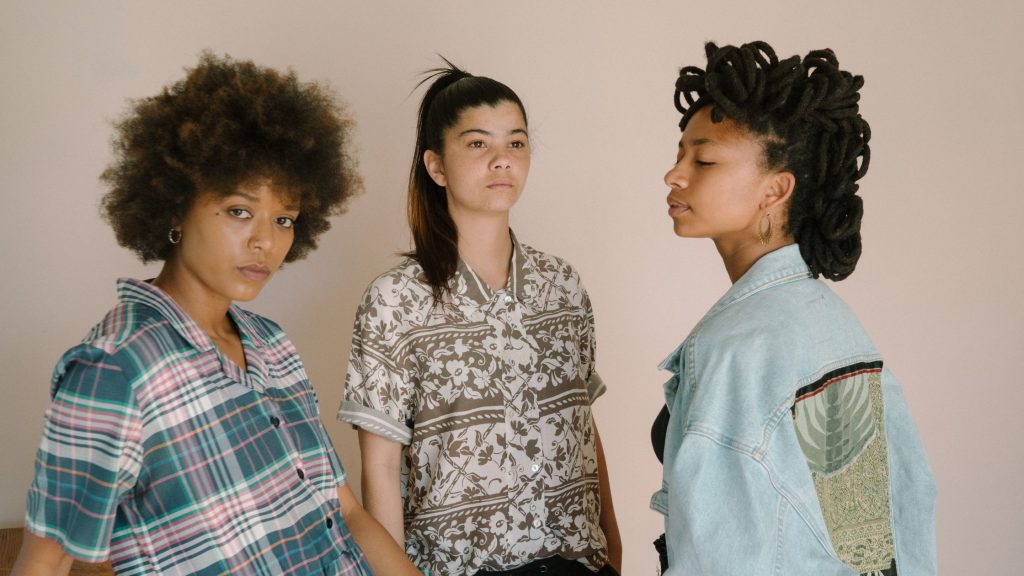Vintage women’s clothing has gained immense popularity over the years, with fashion enthusiasts and collectors alike seeking unique pieces that hold historical value. However, the demand for these items has given rise to a market flooded with counterfeit vintage apparel. Spotting fake vintage clothing can be a daunting task, but with a discerning eye and a few expert tips, you can navigate through this sea of replicas and find genuine treasures.
Research and Familiarize Yourself

Before diving into the vintage clothing market, it’s essential to educate yourself. Study the fashion trends, designs, and fabrics prevalent during different eras. Familiarize yourself with popular vintage brands and their unique characteristics. This knowledge will serve as your foundation to spot potential fakes.
Inspect the Labels and Tags

One of the easiest ways to identify counterfeit vintage clothing is by examining the labels and tags. Genuine vintage garments typically have labels that reflect the time period they were produced in. Look for labels that match the era and check for any inconsistencies in font style, logo placement, or misspellings. Authentic vintage clothing often has fabric content and care instructions on the tags, which may differ from modern garments.
Examine the Quality of the Fabric

Vintage clothing was often crafted with high-quality materials, so inspecting the fabric can reveal a lot. Counterfeit vintage items are often made from cheaper, mass-produced materials. Look for signs of wear and tear, fading, or discoloration, as these are typical characteristics of genuine vintage clothing. Additionally, feel the fabric to determine its weight, texture, and overall quality. Authentic vintage garments tend to have a sturdy, substantial feel.
Pay Attention to Construction and Stitching

The construction of a garment can provide valuable insights into its authenticity. Vintage clothing was typically made with great attention to detail and precision. Examine the stitching and seams for signs of hand-sewing, such as irregular stitches or slight variations in length. Vintage clothing often features reinforced seams, French seams, or bound edges, which are not commonly found in replicas. Sloppy or machine-like stitching could indicate a fake item.
Evaluate the Style and Design Elements
Each era had its distinctive design elements and silhouettes. Study the fashion trends of different periods to identify key details that reflect authenticity. Pay attention to details like button styles, zippers, fastenings, and closures, as these can help determine the garment’s age. Research the history of specific fashion houses and designers to identify their signature design elements, as counterfeit items often lack these unique touches.
Look for Authentic Trims and Embellishments
Authentic vintage clothing often features unique trims, buttons, and embellishments that were popular during the era. Look for details like cloth-covered buttons, hand-sewn sequins, intricate embroidery, or lace trims. These bespoke elements are difficult to replicate with precision, making them a good indicator of authenticity. Inspect the trims closely, checking for quality and signs of aging.
Compare Measurements and Sizing
Sizes and measurements have changed over the years, so comparing vintage sizing to modern standards is crucial. Genuine vintage clothing tends to have smaller measurements than contemporary garments. Familiarize yourself with vintage size charts and refer to them when evaluating a piece. Additionally, check for alterations or adjustments in the garment, as these could indicate that the item has been modified or tampered with.
Seek Expert Opinions and Authenticity Certificates
When in doubt, seek expert opinions. Reach out to vintage fashion experts, appraisers, or reputable vintage clothing dealers who can help authenticate your finds. Some vintage clothing items come with authenticity certificates or labels from trusted sellers, which can provide additional assurance of their genuineness. Buying from reputable vintage stores or attending vintage clothing fairs can also increase the chances of finding authentic pieces.
How Can You Tell If A Piece Of Clothing Is Vintage?
The difference between vintage and contemporary clothing can be hard to spot, but there are a few things you can look for to help you determine if a piece is vintage. The first thing to look for is the fabric. Vintage clothing is often made from high-quality materials like silk, wool, and cotton, while contemporary clothing is made from synthetic materials. Additionally, vintage clothing is often well made, with careful stitching and attention to detail. Contemporary clothing is often made with less care, and often features less intricate details.
Another thing to look for is the design of the garment. Vintage clothing often features unique and interesting designs, while contemporary clothing is often more basic. Additionally, vintage clothing often has a more timeless look, while contemporary clothing can often look dated quickly.
If you’re not sure if a piece of clothing is vintage or not, there are a few ways to find out. One way is to check the label. Vintage clothing often has a label that indicates the year it was made. Another way to determine if a piece of clothing is vintage is to look at the fabric. Vintage fabrics are often made of natural fibers, like wool or cotton, while modern fabrics are made of synthetic materials. Finally, you can tell if a piece of clothing is vintage by its style. Vintage styles are often more classic and timeless than modern styles.
How Do You Identify Vintage Brands?
Many shoppers enjoy the thrill of finding a vintage piece of clothing- something that is no longer in production and is unique to them. Vintage fashion can be defined in a few ways- it could be clothing that is 20 years or older, or it could be clothing that is from a specific time period or style. However, one of the most common ways to identify vintage clothing is by the brand.
Some brands are more likely to be vintage than others. For example, brands like Chanel, Gucci, and Prada are always in style, so a piece from one of these brands is less likely to be considered vintage. However, brands like Abercrombie & Fitch, Aeropostale, and American Eagle were popular in the 1990s and 2000s, so a piece from one of these brands is more likely to be considered vintage.
There are a few ways to determine whether or not a brand is vintage. The first way is to look at the tag. If the tag has the brand’s original logo, then the piece is likely vintage. The second way is to look at the fabric. If the fabric is from a decade or more ago, then the piece is likely vintage. The third way is to look at the style. If the piece is from a decade or more ago, then the piece is likely vintage.
What Is True Vintage Clothing?
The term “true vintage clothing” is often used to describe clothing that is made from fabrics that were popular before the year 2000. However, the definition of “true vintage” can vary depending on who you ask. Some people believe that true vintage clothing must be at least 20 years old, while others believe that the term can be used to describe clothing that is up to 100 years old.
The term “vintage” can also be used to describe clothing that is made from modern fabrics, but has been designed to look like it is from a different era. This type of clothing is often called “vintage inspired” or “vintage inspired fashion.”
So what is the difference between true vintage clothing and vintage inspired clothing?
True vintage clothing is made from fabrics that were popular before the year 2000. Vintage inspired clothing is made from modern fabrics, but is designed to look like it is from a different era.
How Can You Tell If Clothes Are Fake?
The quick answer is that it can be difficult to tell if clothes are fake, but there are some ways to check. Here are a few tips:
- -Check the seams. If they’re sloppy or uneven, the clothes may be fake.
- -Look at the fabric. If it’s thin and looks like it might tear easily, it’s probably not real.
- -Check the tags. If they’re missing, the clothes may be fake.
- -Look for irregularities in the design. If the pattern doesn’t look quite right, the clothes may be fake.
- -Check the price. If the clothes are too cheap to be true, they may be fake.
If you’re still not sure, it’s always a good idea to take the clothes to a store and ask an expert to help you determine their authenticity.
How Do You Know If A Product Is Real Or Fake?
There are a number of ways to determine whether a product is real or fake. Sometimes it can be difficult to tell, but there are a few key things to look for.
One way to tell is to look at the price. If the price is too good to be true, it probably is. Another way to tell is to look at the packaging. If the packaging looks cheap or is not up to par with the quality of the product, it is likely a fake. Additionally, you can check to see if the product has any official seals or trademarks. If it does not, it is likely a fake.
You can also do a little research online. A quick Google search can often tell you if a product is fake or not. There are also a number of websites that specialize in identifying fake products.
If you are still not sure, it is always best to err on the side of caution and not purchase the product.
How Can You Tell The Difference Between Real And Fake Brands?
There are a few telltale signs that can help you differentiate a real brand from a fake one. Here are a few tips:
- Check the packaging: Real brands typically have high-quality packaging that is consistent with the quality of the product. Fake brands, on the other hand, often have poor-quality packaging that is inconsistent with the quality of the product.
- Check the ingredients: Real brands typically list high-quality ingredients on their packaging. Fake brands, on the other hand, often list low-quality ingredients, or no ingredients at all.
- Check the price: Real brands typically cost more than fake brands.
- Check the reviews: Real brands typically have high-quality reviews. Fake brands, on the other hand, often have low-quality reviews.
Conclusion

Spotting fake vintage women’s clothing requires a combination of knowledge, careful examination, and attention to detail. Educating yourself about different eras, familiarizing yourself with vintage brands, and studying fashion trends are essential steps in becoming a discerning vintage clothing enthusiast. By examining labels, inspecting fabric quality, evaluating construction, and paying attention to design elements, trims, and sizing, you can increase your chances of acquiring genuine vintage treasures. Remember, seeking expert opinions and buying from reputable sellers are always good practices to ensure the authenticity of your vintage finds. Happy hunting!





